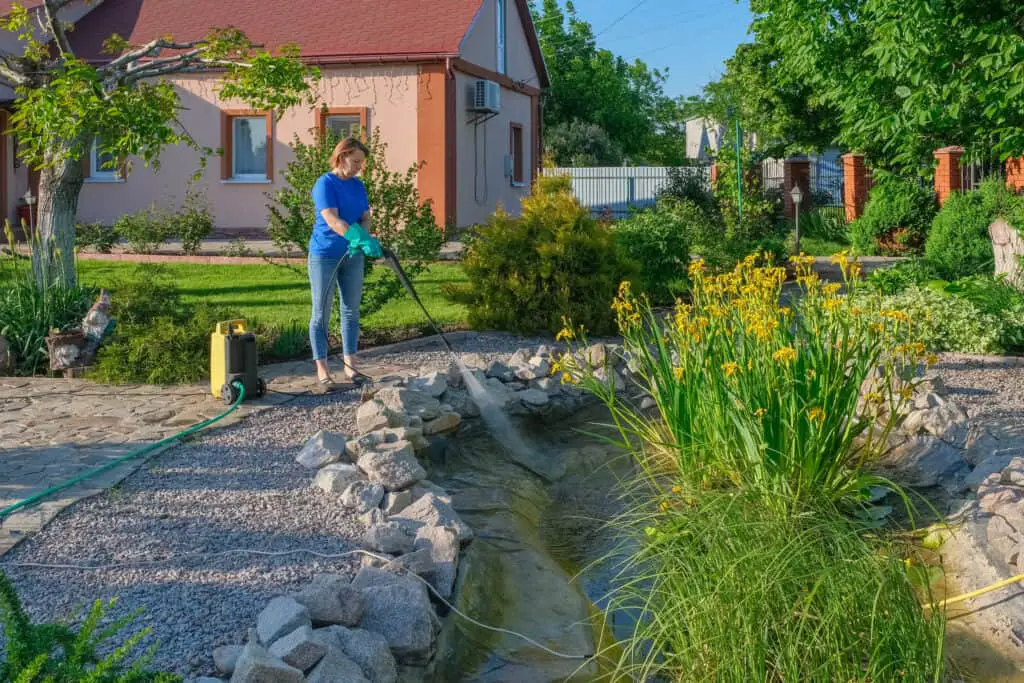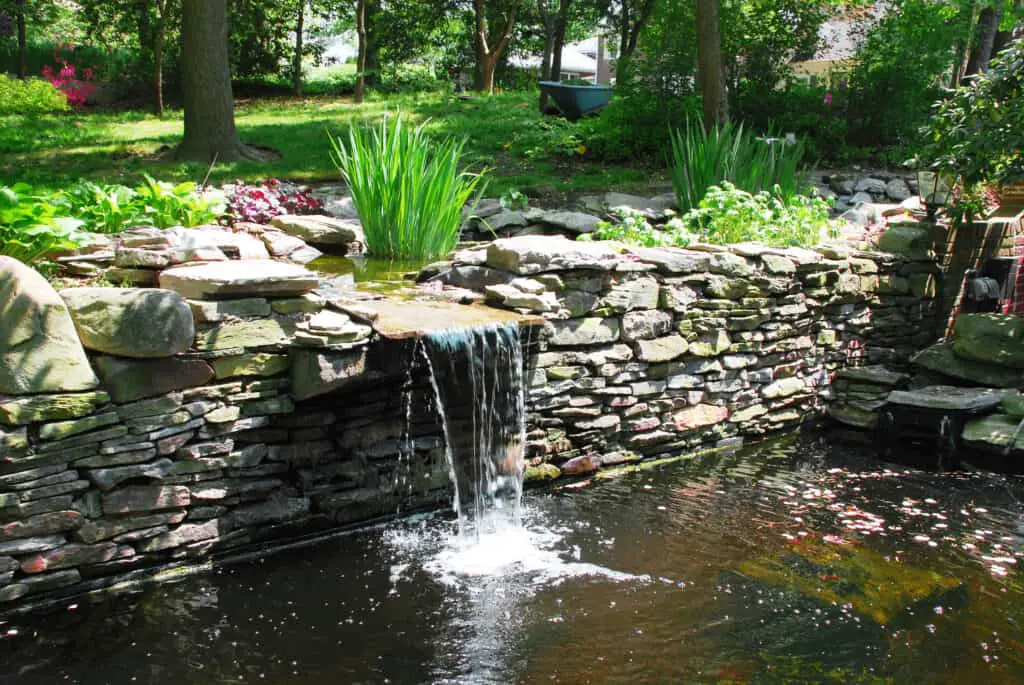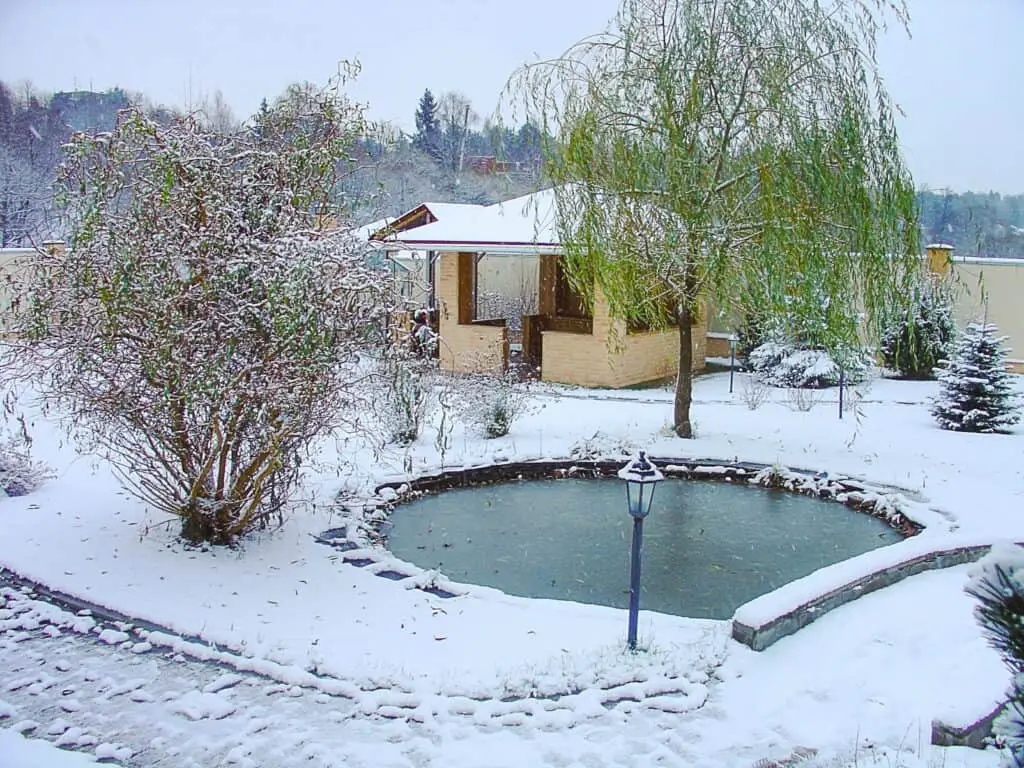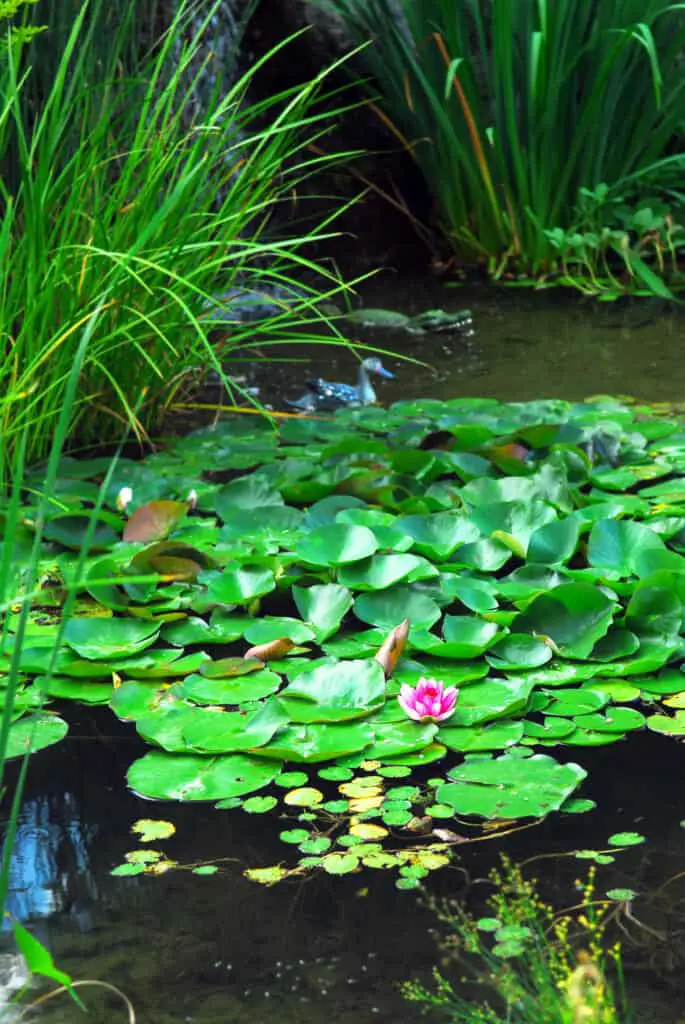
Koi ponds are a wonderful sanctuary of peace for outdoor spaces, and watching koi weave slowly around the koi pond is mesmerizing and peaceful. Unfortunately, keeping the pond and fish in optimal condition requires maintenance. So how often should I treat my Koi pond?.
A koi pond requires regular treatment, which includes cleaning, topping up the water, backwashing the filter, controlling algae growth, and ensuring the Koi remain healthy. Keeping up with a routine will ensure that the koi pond remains pristine and the fish continue to grow and thrive.
While the koi pond is a wonderful sanctuary of peace and rest, keeping it in good condition and ensuring the fish stay healthy requires constant attention.
Pro Tip: If you’re tired of wasting money and making costly mistakes on the koi-keeping hobby or are thinking about buying koi fish but don’t know where to start, I strongly suggest you check out this ebook. I recently read this ebook, and it contains SO much useful information, such as:
- 3 proven steps to identify koi fish diseases
- WARNING: 3 things you should NEVER do when it comes to caring for koi
- When to seek professional help when it comes to looking after your koi
How Often Should I Treat My Koi Pond?

Treating your Koi pond in line with a regular schedule will ensure that the pond looks good and the Koi remain healthy.
The following maintenance needs to be carried out.
- Feeding the Koi.
- The pond’s cleanliness.
- The water quality.
- The water health.
- Reliable functioning of the equipment.
Daily Care of Your Koi Pond
There isn’t much maintenance that needs to be done every day; however, if you keep the following under control, it will ensure the health of your Koi.
Feeding The Koi
It is very important that you don’t overfeed the fish for the following reasons:
- The uneaten food will decay and cause the water to become cloudy.
- The uneaten food will produce bacterial growth, making the fish ill.
- Uneaten food can cause the pond to generate unpleasant odors.
Given this, only feed the fish with amounts they can eat within five minutes.
The Ponds Cleanliness
Remove any large surface debris daily. Don’t leave debris because it will ultimately start decaying, contaminating the water and impacting the Koi’s health. In the fall, when leaves are falling, consider installing a net over the pond to prevent the leaves from falling into the water. These will ensure that the koi pond water remains sufficiently aerated for the fish.
Weekly Care For Your Koi Pond
The following should be checked weekly to keep the pond optimal.
Monitor The Pond’s Temperature
While you don’t have to check the water temperature daily, if there are seasonal or weather-related temperature spikes, you must keep an eye on it.
If the water rises above 750 Fahrenheit (230 Celsius), the oxygen levels will be compromised.
If the average temperature is too hot, it may be time to install any of the following.
- Aeration tubing is placed under the gravel.
- Free-standing air domes and air rings go on the pond floor.
- Airlift pumping systems flow the water through filtration and oxygenate the water column with the same energy.
Change The Water
Water changes are necessary because your pond is essentially a closed water system. Water evaporates and leaves almost all of the pollutants behind.
The filtration system controls almost all of the problem matter; however, if you replace 10 percent of the water in the pond, it will provide an uncontaminated volume regularly. Yow will need to add more than you extracted to cover the volume of water that evaporated.
If you intend to use tap water, remember that it probably contains chlorine which is deadly to Koi, so pre-treat the water with a dechlorinating agent before you refill the pond.
As far as possible, never change the entire water volume from the pond because a complete water change shocks the pond and everything in it (Koi, plants, bacteria, soil, algae).
Check The Equipment
Ensure that the Pumps are working and are not clogged. You should also clean the filter sponges and ensure they are clear and water can pass through them easily. Wash them in pond water to retain vital bacteria so that no chlorinated tap water enters the pond after cleaning them.
Check The Koi
Keep your eye on the Koi’s size, condition, mobility, and general health. The earlier you pick up the signs of infection or illness, the better the chance that you will be able to treat them.
Monitor Algae Growth
While biofilters provide an amazing service in converting the ammonia produced by the fish waste into nitrates, it is unfortunate that algae thrive with excess nitrates.
There are two solutions to this problem.
- Use an algaecide in the water. Check the instructions to ensure that it will not harm the fish and understand the required quantities.
- While not always possible in a koi pond far from the house, using ultraviolet light from a UV lamp kills the immature algae before they can grow and reproduce.
Backwash The Koi Pond
If you have a sand filter, it traps a huge amount of gunk in the sand bed. If this is not regularly backwashed, it rots and breeds pathogenic bacteria and toxic chemicals that damage the whole Koi pond system. While it is a non-negotiable activity for a sand filter, it is also important to backwash other filter types regularly.
Backwashing reverses the water flow, flushes the system of all the impurities, and lets you clean the filters without physically scrubbing them. Using a biological filter, you can backwash the filter every other week. A sign that the filter needs to be back washed is if the filter’s pressure gauge reads higher than usual. If you have used too fine a filter, you can change this to a coarser one which should require backwashing less frequently.
Seasonal Maintenance Of Your Koi Pond
As seasons change, so do the needs of your koi pond. The following schedule will assist you in managing the koi pond through these times.
Fall And Winter

When fall arrives, and the weather turns cooler, the aquatic plants in your koi pond may change colors in the same way the leaves in the trees do. Just like trees, some aquatic plants also drop their leaves. At these times, it is important to ensure your filtration system works to specification.
It is also a good idea to be proactive and prune the dying or dead leaves before they drop into the water. Keeping your Koi fish on a summer or autumn diet through winter is not optimal, and it is a good idea to change over to wheat germ food, which is easier for them to digest at lower temperatures. If you happen to live in a very cold climate and are subject to freezing conditions, the koi pond may freeze over.
It is vital to prevent this from happening because it will reduce the aeration of the water. To overcome ice, it is recommended that you use a floating de-icer in one section of the pond. This will ensure the water continues to be aerated throughout the harshest winter.
Purchasing a wireless digital Koi pond thermometer is a good idea because it enables you to check the temperature of the water regularly, correct it as needed.
Spring And Summer

In spring you should clean the pond thoroughly. Remove all loose debris, vacuum the floor, remove excess algae, and generally prepare the koi pond to be the showpiece it is intended to be.
After a long winter, the Koi are weaker than normal, and their immune systems are lower than usual. Parasites are active in this period and will attach to the Koi if you allow them to. Before increasing their feed, attend to the potential parasitic and bacterial issues first.
You should use a product that is nonchemical and that naturally eliminates bad bacteria like Aeromonas or Pseudomonas, which minimizes the risk of ulcer problems in your Koi fish. Products that meet these criteria are found here. If you treat the pond twice a year, it should prevent an issue from developing.
Conclusion
To stay in good shape and ensure the fish’s health, Koi ponds need constant and regular maintenance. While daily and weekly routines are not fun, they must be carried out.
If you take care of the Koi pond and fish and practice a regular maintenance routine, you will be able to enjoy the wonderful setting that a koi pond provides.
References
https://www.doityourself.com/stry/7-koi-pond-maintenance-tips

